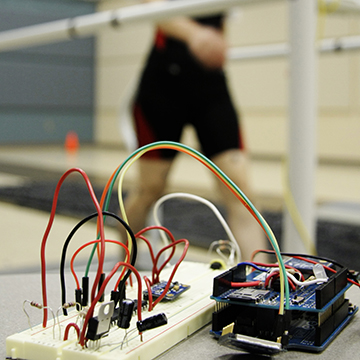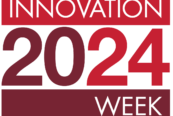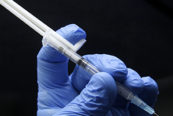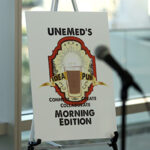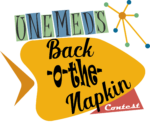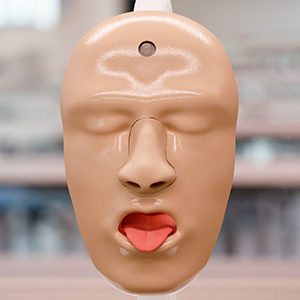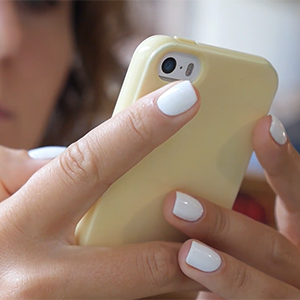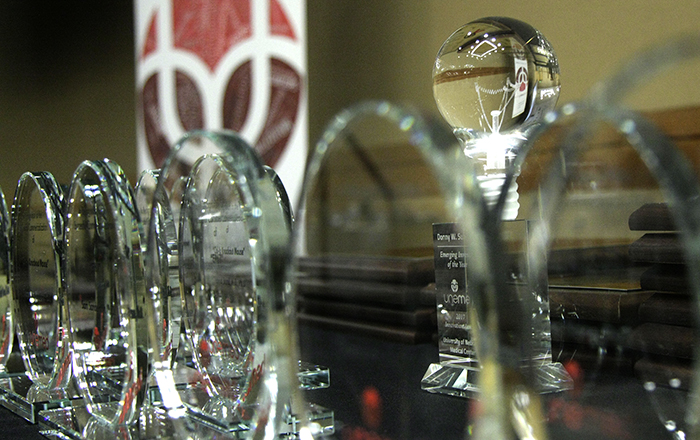
by Tyler Scherr, UNeMed | January 24, 2019
If necessity is the mother of invention, then the operating room is the grandmother. Most major medical innovations are patient-driven and clinician-led.
Good invention, however, takes work. Inventors require support. Not only financial support, but—perhaps more importantly—teams of people with varied expertise who are willing to shed blood, sweat and tears to create and validate a prototype.
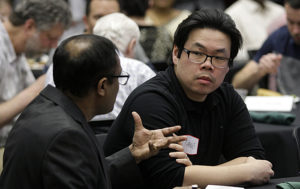
Sachin Pawaskar (left) and Thang Nguyen chat shortly before UNO’s IS&T Capstone presentation on June 1, 2018. The project was the realization of WeChart, Nguyen’s invention of a more efficient way to teach nursing students better clinical charting skills.
“It’s frustrating to nurture a great idea in your head only to know you lack the skills and funding required to bring it to life,” said Thang Nguyen, an ER nurse at Nebraska Medicine who has submitted 37 new inventions to UNeMed since 2011. “This is particularly true when it comes to software based inventions.”
Researchers at the University of Nebraska have teams: active laboratories with trained technicians, tireless students, and skilled postdocs. But where do clinicians like Thang find support?
Since 2012, more than 65 percent of our inventions have come from full-time researchers. That makes sense because researchers have an infrastructure in place to support innovation. But from my experience, clinicians are no less innovative than researchers. In fact, clinicians have been responsible for about 160 new inventions since 2012. And of those, 98 came from repeat inventors.
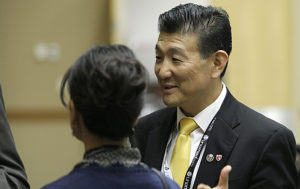
Donny Suh, M.D., (right) was named UNeMed’s Emerging Inventor of the year during the 11th annual Research Innovation Awards Banquet on Thursday, Oct. 26, 2017.
Those numbers show me that a full 61 percent of our clinician inventors have, whether by chance or by design, surrounded themselves with a support team. We decided to take a page from their playbook and be more proactive in connecting clinicians with the resources they need to make their innovative dreams into commercial realities. Because, the truth is, in 2019, resources now exist at the university and within the community that support clinician inventors like never before.
“I have found a great resource in the faculty and students at the UNO Peter Kiewit Institute who are always eager to tackle a new project,” Thang said.
Thang’s most recent work with UNO was for a software-based solution, but another resource is the UNO Biomechanics Machining and Prototyping Core Facility. Since its inception in the summer of 2018, Brian Knarr, PhD, and Travis Vanderheyden have overseen the prototyping of multiple medical device concepts.
Dr. Knarr also oversees the newly established UNO Biomechanics Senior Design Capstone Program. In fall 2018, UNMC rheumatologist Marcus Snow, M.D., had the opportunity to work with the first cohort of UNO students in this program.
“I thoroughly enjoyed getting to work with senior biomechanics engineering students at UNO,” Dr. Snow said. “I believe the overall device design and concept has benefited from the fresh set of eyes and engineering perspective.”
Besides UNO Biomechanics, Omaha is also home to the largest makerspace in the state at Metropolitan Community College. Their Center for Advanced and Emerging Technology (MCC CAET) provides the public access to state-of-the-art 3D printers, 3D scanners, CNC routers, laser cutters, and a five-axis CNC metal milling machine.
Perhaps the best resource, however, are the students of a prototype design college-level course, who are eager to test their new skills on interesting projects.
“The prototype design curriculum is entirely project-based learning,” MCC instructor Mike Guericke said. “So, our students not only become experts at one or more pieces of equipment, but also very comfortable with tackling new projects from scratch.”
Whether at UNMC McGoogan Library of Medicine, UNO Criss Library, UNO Biomechanics, MCC CAET, or even Children’s Hospital and Medical Center, the increased availability of 3D printers over the past two years has been a huge boon to UNMC clinician inventors. Some, like UNMC pathologist Jesse Cox, M.D., PhD, or UNMC anesthesiologist Nick Markin, M.D., have taken advantage of online resources to learn 3D modeling and computer-aided design (CAD).
Others, like pediatric ophthalmologist Donny Suh, M.D., prefer to work with skilled 3D designers on their numerous projects.
“3D printing has exponentially reduced my prototyping time,” Dr. Suh said. “With the help of UNeMed, and people like Gabe Linke [3D Printing Coordinator] at Children’s Hospital, I can have half a dozen prototype iterations modeled and printed in a month.”

